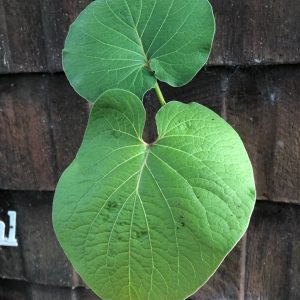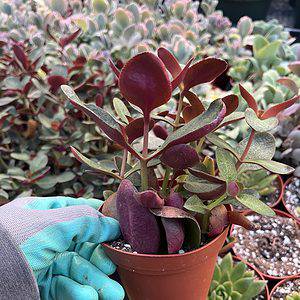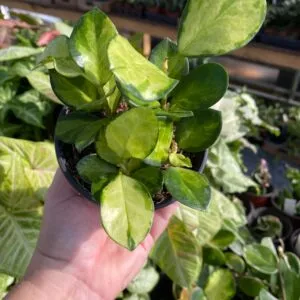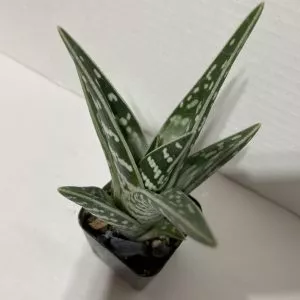No products in the cart.
You cannot go wrong with small evergreen shrubs when thinking of adding a new specimen to your garden or simply wanting to fill that small space to lighten up your home.
Most of them come in interesting foliage formations and colors, plus their growth habit can be easily catered to, given that their height and spread would not exceed 6 feet.
With their morphological traits differing- where some have dark green foliage to light shade needles, compact growth habit, showy flowers and fruits, and erect or soil-hugging form – these shrubs have much to offer besides a simple garden ornament.
Moreover, the popularity of small evergreen shrubs, such as hedges, border plants, ground cover, and a small tree for flower beds, is brought about by their low maintenance and relative ease of care.
With that, get to know some of the best small evergreen shrubs you can easily grow in your garden to become a haven in no time!
14 Best Small Evergreen Shrubs To Grow In Your Garden
Great, let’s journey through our list of evergreen shrubs that will brighten your living space and garden.
Weeping Blue Atlas Cedar

You surely wouldn’t miss the weeping blue atlas cedar, an eye-catching small evergreen shrub with a unique feature. As the name suggests, this evergreen shrub is native to the Atlas Mountains in northern Africa.
Characterized by its drooping and twisted branches, the plant is remarkably known for its whorls of stiff, powdery dark green needles about an inch tall. In springtime, small cones that grow upright are produced on the branches.
With a slow growth rate of about 1 to 2 feet per year, the blue atlas cedar is best planted in the spring or fall as a container plant or as a burlap specimen. You might be relieved as a beginner as they are generally easy to care for. These trees thrive in partial shade to full sun.
They can thrive in a variety of soil and watering conditions. Yet, it is ideal for staking the plant until it is fully established or modifying its growth to your desired shape. So add these evergreen shrubs to your shrub borders with needle-like leaves and dense branching.
Fire Chief Globe Arborvitae
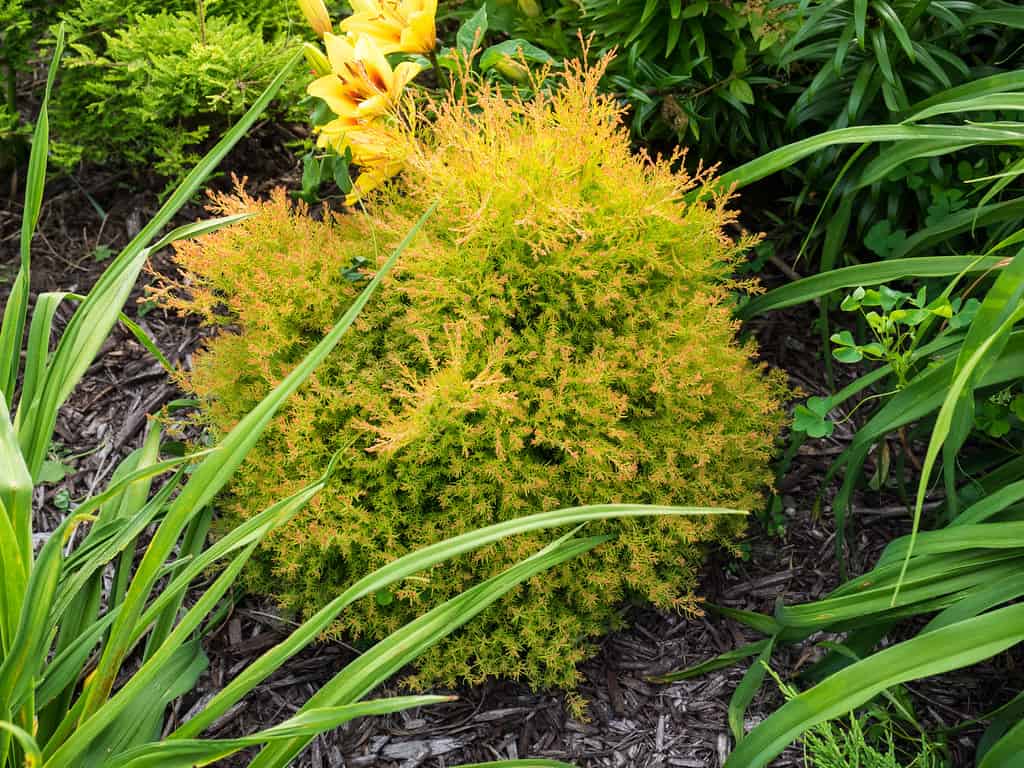
The Fire Chief Arborvitae (Thoccidentalis occidentalis Congabe) is an equally gorgeous evergreen shrub with relatively low maintenance. Its bright green foliage highlights its rounded and dense growth bushy habit. In spring, this indoor plant would showcase colorful gold foliage.
In fall, the giant dwarf arborvitae will flaunt its red-tipped shoots. Due to its slow growth, the plant is ideal for foundation planting, as an accent for a rock garden, and as a border plant. With dense growth habit, it fits in well in small gardens without taking up much space.
The plant does well under full sun but can tolerate some partial shade. Watering should be done once a week for the first two years and adjusted until the plant is well-established. The plant is quite resistant to deer, pests, and diseases and thrives in moist soil that dries out between watering.
Thuja orientalis ‘Aurea Nana’
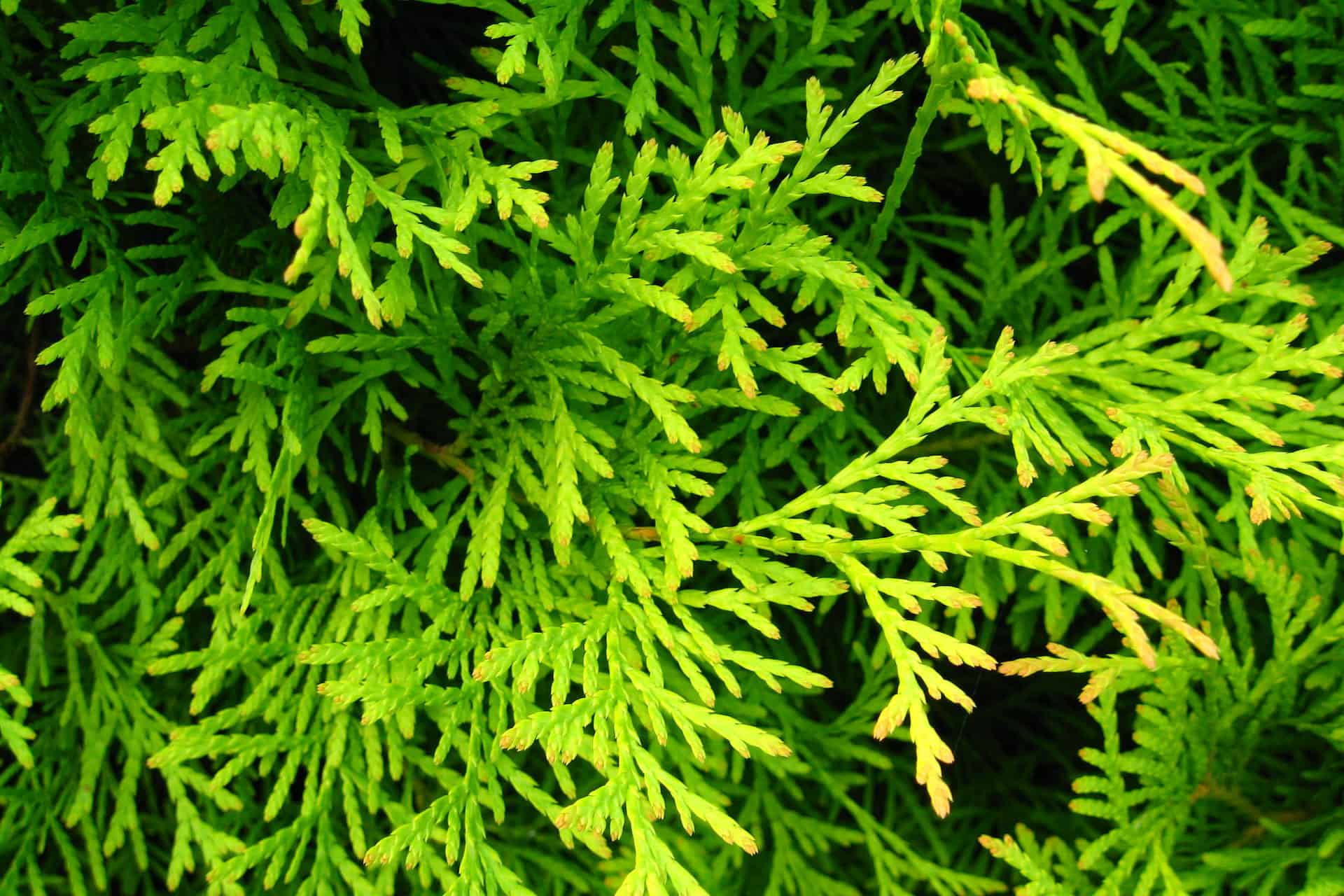
Dwarf Golden Arborvitae (Thuja orientalist ‘Aurea Nana’)’ is one of the most popular golden dwarf, evergreen conifer that grow primarily in northern China, Manchuria, and Korea. They have an upright growth habit with rounded gold foliage that interestingly changes to bronze during the winter.
They are ideally planted in pairs and groups and in borders or informal rows – where they can dramatically add texture to any landscape all year round. Furthermore, their compact formation makes for a perfect privacy hedge, incorporating an appealing accent to a curb at your home.
Like most arborvitaes, these dwarf, evergreen shrubs are also tolerant to some levels of drought. Watering should be thoroughly done once or twice a week, particularly for the first two years. It is also essential that the soil drains well and that excess moisture is released to prevent root rotting and other diseases.
Moreover, the plant does well under partial to full sun, making sure that the plant is not exposed to prolonged periods of intense heat.
Dwarf Globe Blue Spruce

This beautiful dwarf, evergreen shrub in your garden will surely bring in that winter nostalgia! These dwarf varieties form a unique topiary tree grafted to a hardy tree stock. The dwarf globe blue spruce often has a lollipop look.
Still, these small evergreen shrubs look fabulous in rock gardens, shrub borders, decks, mixed beds, and patios. You may also find it a relief that the evergreen shrub is relatively low maintenance as it appears to be deer-resistant and has some level of tolerance to pests and diseases.
Moreover, the bluish-green needles retain color all year and are brighter during summer. With sufficient watering and using humus-rich and mildly acidic soil, the tree would grow as elegantly as it should. Also, please note that the tree adores adequate moist soil but can tolerate a bit of drought, mainly when its extensive root system is already well-developed.
Still, it may be best to water and fertilize these dwarf, evergreen shrubs as needed to keep them happy and vibrant. They thrive in pacuspidata’ to full sun.
Taxus cuspidata ‘Dwarf Bright Gold’

With its stunning and colorful green foliage, the dwarf yew (Taxus cuspidata ‘Dwarf Bright Gold’) will surely bring in that ghostly garden vibe! Ideal for foundation plantings and an accent plant, the dwarf gold yew has an upright spreading growth habit instead of being a bushy plant.
The plant is characterized by its brightly colored foliage, intensified by the needles having rich gold bands around the edges. Such features are highly ornamental. Thus, the plant is among the best evergreen shrubs – with colors retained throughout winter.
Generally, the plant grows about 6 feet tall and wide. It tends to spread out right to the ground, able to cover rough edges and any unwanted sights. In choosing an ideal location, ensure that the area receives ample morning sunlight and full shade in the afternoon.
Keeping the soil moist but not overly saturated may also be beneficial. Watering may increase during the summer s
Pinus sylvestris ‘Pumila’

The Dwarf Scotch Pine (Pinus sylvestris ‘Pumila’) is an evergreen conifer known for its vibrant blue-green needles, which retain its colorful foliage throughout winter. It is an attractive specimen owing to its dense horizontal branches and reddish bark.
Hence, it is often grown as an ornamental plant that is usually trained into a rounded form. These dwarf, evergreen shrubs are a staple for foundation planting and hedges and serve as an accent plant outdoors.
These dwarf trees are low maintenance and are deer-resistant. Nonetheless, the evergreen shrub may be ideally trimmed from time to time to remove unwanted, decaying branches and to maintain its shape. Over time, these compact evergreen shrubs will grow about 4 feet tall and 4 feet wide.
Having a relatively slow growth rate, the plant may live up to about 40 years or more. Mainly when grown under the best conditions, such as full sun to partial shade. In addition, the evergreen shrub is said to be drought-tolerant.
It does best in an average moisture level, but be sure that the soil is well-draining as the plant cannot stand soggy soil. This characteristic also makes the small evergreen shrub ideal for a moisture-conserving landscape.
Pinus strobus

Blue Shag pine (Pinus strobus), also known as Eastern White pine, is a vibrant magical plant derived from the witch’s broom and was discovered by Dr. Sidney Waxman of the University of Connecticut in 1978.
The small evergreen shrub is known for producing long, soft, blue-green needles that may grow relatively rounded. The pine can be easily trained to become among those compact evergreen shrubs that are an excellent addition to any landscape.
After about ten years, mature scotch pines will measure 4.5 feet tall and wide – having an annual growth rate of 4-6 inches. They adore the full sun and well-drained open soil but may also tolerate other soil types.
Once fully established, they can be pretty tolerant to some level of drought, particularly the ones that occur during summer. Further, the pines do not need much trimming to maintain their compact and rounded shape.
This may be ideal for growing in container pots, planter boxes, and patios.
Rhododendron minus
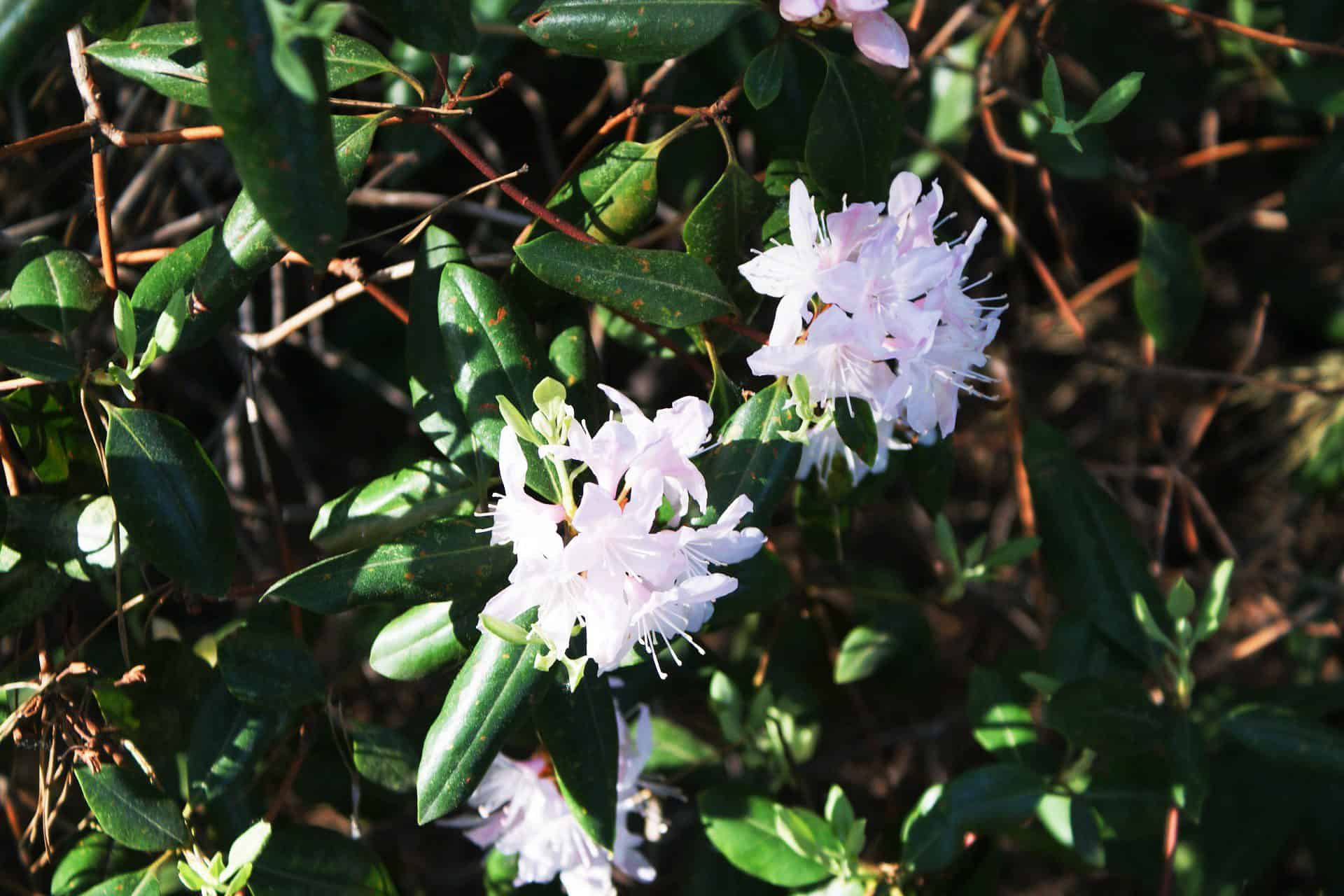
Dwarf rhododendrons (Rhododendron minus) are broadleaf evergreen shrubs that grow to about 1 foot and expand at only 1 to 2 feet. The name rhododendron comes from the Greek words rhodo, which means rose, and dendron, which means tree.
A member of the Ericaceae family, these dwarf evergreen shrubs are native to China. With a woody characteristic, the plant may be propagated through grafting, layering, and seeds. Moreover, the plant has a purple bloom, and flowers bloom in early spring.
Also, the leathery dark green leaves are reportedly fragrant and are seemingly the most exciting part of the plant. Dwarf rhododendrons adore moist but well-drained and slightly acidic soil. In choosing a growing location, one must avoid full sun exposure, which ultimately damages the plant’s foliage.
The plant cannot tolerate dense and clumpy soil, which may cause rotting of the root system. To improve soil texture, add in your organic amendments, and be sure to avoid overwatering. This small evergreen shrub is ideally planted on border fronts, rock gardens, or woodland gardens.
If grown as a ground cover, it may be best to plant each at about 15 inches apart as they will later fuse to form a cover. The compact evergreen shrub has no known severe insects or diseases. So, you can add it to small spaces without any problems.
-
$18.95Sold By: SunSoul Plants
$24.95In stock
LIVE Piper Auritum plant in a container, potted with soil in 4″ pot
Rated 4.87 out of 5 based on 98 customer ratings01Sold By: SunSoul Plants -
Free Shipping$15.99Sold By: Gar-Zen Botanical Design
In stock (can be backordered)
Cuphea hyssopifolia Mexican Heather Elfin Herb Pollinator.
Rated 4.86 out of 5 based on 49 customer ratings00Sold By: Gar-Zen Botanical Design -
$18.95Sold By: Orchid Stuff Plus
In stock
Golden Pathos (Epipremnum aureum) in a 4 inch pot!
Rated 5.00 out of 5 based on 1 customer rating00Sold By: Orchid Stuff Plus -
$10.99Sold By: Cacti and Exotica
In stock
Crassula multicava
Rated 4.98 out of 5 based on 59 customer ratings00Sold By: Cacti and Exotica
Tsuga canadensis‘ Moon Frost’
The Moon Frost Hemlock (Tsuga canadensis ‘Moon Frost’) has a beautiful bright glow similar to a moonlit night, hence the name ‘moon frost.’ Its delightful appearance is attributed to its needles with light tones that give an off-white shade to its foliage.
During the winter, the foliage would subtly turn pink but then green by the following spring. Over time, the ‘moon frost’ broadens and tends to spread, but it remains a dwarf evergreen. In the middle of winter, the ‘moon frost’ would have an ethereal glow that adds to its frosty appearance.
Being a true dwarf conifer, the plant grows only about 3 feet tall and 4 feet wide. Meanwhile, the lighter-toned needles are flat and slightly tapered, while the bark is brown and deeply fissured. These small evergreen shrubs may be subjected to pruning only when you want to maintain a restrictive planting.
Also, it is best to grow the plant in moist but well-draining areas under partial sun. You may also use some organic compost to help improve the soil’s nutrients from where the plant grows.
Cryptomeria japonica

The Japanese cedar (Cryptomeria japonica) is a timeless specimen that transcends culture, history, and architecture for centuries. Native to Japan, the coniferous evergreen tree that is visually impressive has an upright form and relatively straight trunk.
For years, Cryptomeria japonica has served as an ideal timber source in Japan. Yet, its pleasing appearance and aesthetic value have made the tree a highly coveted specimen for landscape designs and outdoor gardens.
Belonging to the cypress family, the cedar is a monotypic genus with no other counterparts. Its features include vibrant foliage, peeling bark, cones, and multiple arrow-straight trunks. Thankfully, cedar is easy to care for.
First, select an ideal planting space, noting that the tree will eventually expand and become massive. Choose an area with moist but well-draining soil and a pH of 5 to 6.5. Allow the tree to receive ample light and some afternoon shade to protect it from scorching.
Depending on the weather, watering may be done twice or thrice a week. Just be sure not to make the soil soggy, as this predisposes the tree to root rotting. Further, the dwarf evergreen may also benefit from fertilization, particularly when using a slow-release type of fertilizer at the end of winter or early spring.
‘Fire Power’ Heavenly Bamboo

The Fire Power Heavenly Bamboo is a remarkable plant known for its attractive foliage, accessorized by very few flowers or fruit. As an evergreen shrub, the ‘firepower’ only grows about 2 feet tall and wide. Interestingly, the leaves usually retain their vibrant red color throughout winter.
The most appealing feature of the nandina is its contrasting foliage color, where the new shoots appear green while the aged leaves have purple highlights, hence the name’ firepower.’ It has become apparent that the red foliage forms in the fall and is throughout winter.
The ‘firepower’ is ideally grown among compact evergreen shrubs for landscapes. With a mounded growth habit, the plant is terrific for borders and containers, adding year-round interest to any garden. Additionally, the ‘firepower’ is low maintenance as it requires little care and is resistant to damaging pets and diseases.
Grow your ‘firepower’ in rich but well-draining soil. Water regularly and thoroughly, particularly during the initial growing season. Once established, you may reduce watering based on the weather. You may also want to apply some fertilizer and organic amendments to keep the plant vibrant and healthy.
Additionally, the ideal planting season may be from fall to spring.
Juniperus communis var. depressa

(Juniperus communis var. depressa) is a multistemmed evergreen shrub often grown as an ornamental plant due to its excellent and delicate texture that makes for an ideal landscape specimen. Native to Dakota, the plant has sprawling, dense, and shimmering foliage that will delight any garden.
The plant is characterized by its two-toned foliage: silvery blue in the upper portion and dark, rich green in the base. As an incredible ground cover, the evergreen shrub could quickly hug the soil, grow at only 1 to 2 feet, and spread from 3 to 5 feet.
The shimmering foliage gives a year-round interest, with foliage colors subtly changing each season. In autumn, for example, the blueberry delight gives off coppery hues. Yet other than its pleasing look, the dwarf plant provides shelter for songbirds, as they use it to build nests away from predators.
It is also relieving that it is deer-resistant, and other animals would not care for the blueberry delight. Yet, the plant is quite susceptible to spider mites, so some measures, such as natural insect spray and manual control, can be taken to avoid distress.
In addition, the plant does well in full to partial sun and in moist but well-draining and fertile soil. Mulching of the base of the plant is also recommended a few years after planting, as this could suppress weeds. Also, planting them along slopes and as foundation plants could prevent erosion.
For landscapes, the recommended spacing should be about 2 to 3 feet for a relatively denser look.
Buxus sempervirens “Suffruticosa

One of the most delectable evergreen plants is the small Dwarf English Boxwood (Buxus sempervirens “Suffruticosa”), which is relatively slow-growing and, thus, can be trained to form tufts of growth that are rounded and cloud-like if not pruned.
The dwarf English boxwood is characterized by the tiny leaves of dark green on the top and light green on the underside. The plant only grows about 3 feet tall and slowly expands from 1 to 2 feet. Such characteristic is ideal for hedging and border planting along the pathways.
In addition, the plant may also be suitable for topiary, container gardens, and flower beds. Boxwood shrubs thrive well in USDA hardiness zones 6 to 8 and tend to establish well under full sun to partial sun.
Moreover, the plant needs constant watering each week, which may increase during summer. The English boxwood also prefers moist but well-draining soil; hence, a combination of clayey and sandy soil rich in organic matter is ideal.
Should you wish to grow these small evergreens in your garden, balancing all aspects of light, water, and soil will ensure productive and healthier growth.
Euonymus
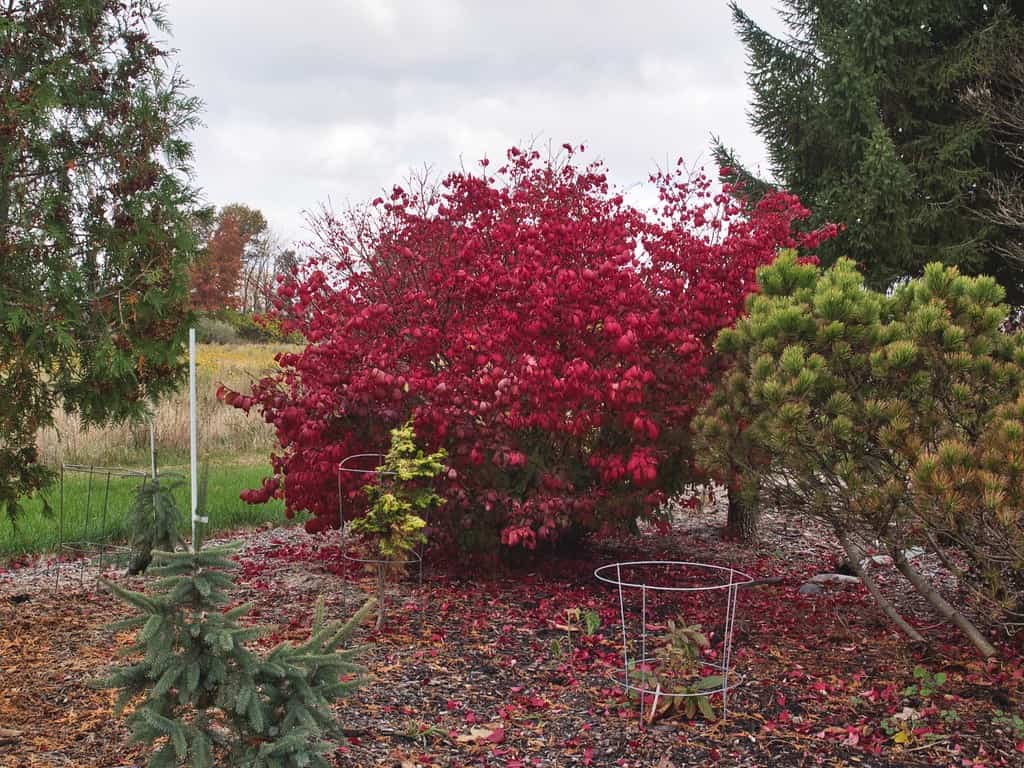
Euonymus is a genus of evergreen or deciduous flowering shrubs commonly known as Spindle tree. The genus encompasses about 140 species and several other cultivars. They are native to East Asia but are widely distributed in western regions such as Canada and North America.
In their natural habitat, these evergreen shrubs often grow in forestlands and a combination of woodlands. Some cultivars of the genus can produce showy clusters of flowers and bright red berries. Meanwhile, other dwarf varieties, such as border plants, hedges, and specimen plants in landscape and outdoor gardens, serve varying purposes.
Their versatility and ease of care make them one of the most popular shrubs in landscaping. They can be grown in various soils and tolerate drought and waterlogging. As for lighting, it requires full sun to partial shade (away from direct sunlight for at least 2-6 hours).
Some of the varieties have arching, climbing, and erect growth habits. They would usually grow from 4 to 6 feet tall and wide. Often, the shrubs are multistemmed and have a moderate growth rate. While the plant has numerous positive attributes, it is also important to note that some species of Euonymus (E.g., E. alatus) are prohibited in some regions due to their tendency to become invasive.
Final Thought
Dwarf, evergreen shrubs are everywhere in nature; they are an ideal part of any woodland and tropical-inspired greeneries, which makes them even more in demand.
With colors ranging from dark green foliage to lighter colored ones, from small evergreen shrubs to deciduous types (which may also change in colors depending on the prevailing season), and from tall and wide to compact plants.
These evergreen shrubs can certainly provide decadent artistry to just about any landscape!
Frequently Asked Questions
Small evergreen plants are shrubs that retain their leaves or needles all year round and have a growth habit that can be easily controlled, with a maximum height and spread of 6 feet. Hence, you can have dark green needles displayed year-round.
Small broadleaf evergreen shrubs are a great addition to any garden, providing year-round interest with their interesting foliage formations and colors. They also require low maintenance and are relatively easy to care for.
Broadleaf evergreen shrubs are versatile and can be planted in various locations, such as shrub borders, ground cover, hedges, and accent plants. You can add your broadleaf evergreen shrub to a rock garden, and they fit into small gardens.
A: Some popular small evergreen shrubs include Weeping Blue Atlas Cedar, Fire Chief Arborvitae, Bright Gold Yew, Japanese Black Pine, and Dwarf Globe Blue Spruce.
Care for small evergreen shrubs varies by species, but generally, they require well-draining soil, moderate watering, and some pruning to maintain their desired shape. It’s always best to research the specific care requirements for the particular species you are growing.
Several small evergreen shrubs grow bell-shaped flowers. Some common examples include Campanula, Abelia, Leucothoe, and Pieris. Would you like me to provide more information about any of these shrubs?
Whether you want to buy, sell, or simply reach out to other plant enthusiasts, Plantly is the right place to be!
-
$18.00Sold By: Smoot's Farm
In stock
Hoya Australis Lisa 4 Pot Live Starter Plant
Rated 4.89 out of 5 based on 27 customer ratings00Sold By: Smoot's Farm -
-
$16.00Sold By: Beauties & Beasts
In stock
Cactus – Echinopsis chamaecereus (clumping)
Rated 4.83 out of 5 based on 24 customer ratings00Sold By: Beauties & Beasts -
$9.99Sold By: Succulent Oasis
In stock
Small Succulent Plant Partridge Breast Aloe
Rated 4.84 out of 5 based on 352 customer ratings00Sold By: Succulent Oasis
